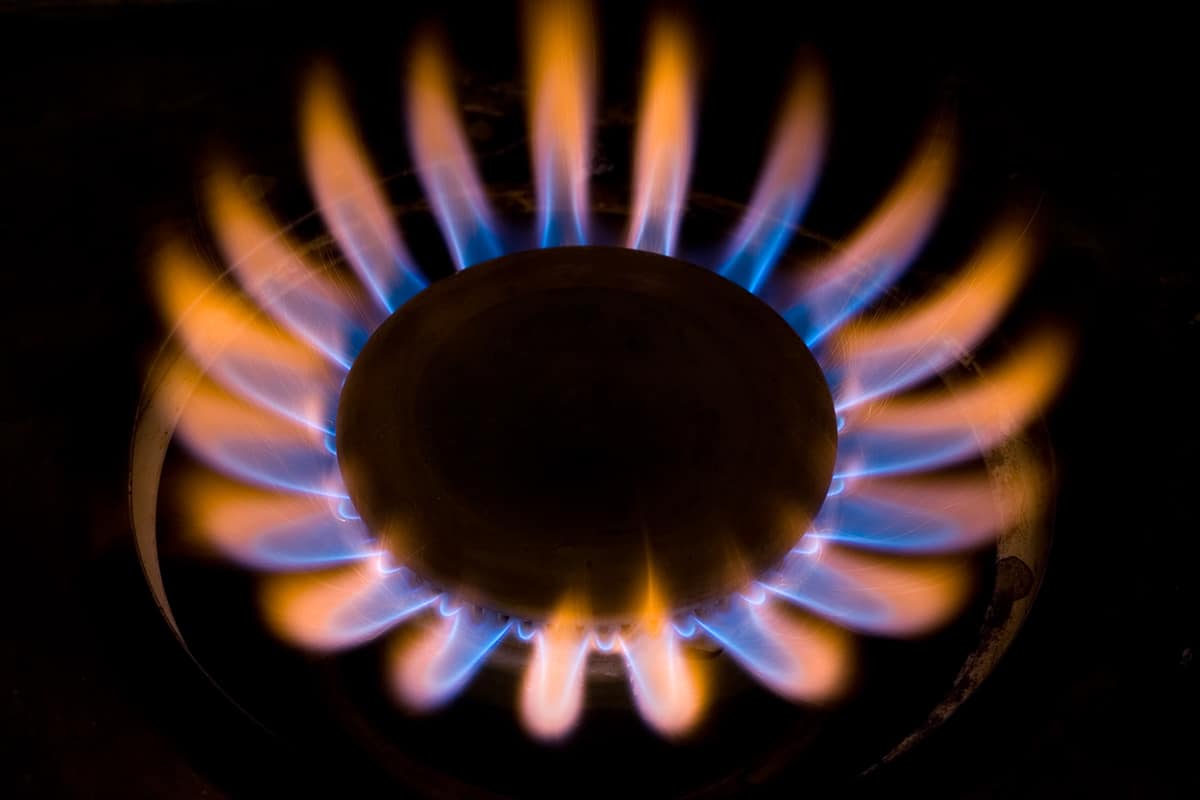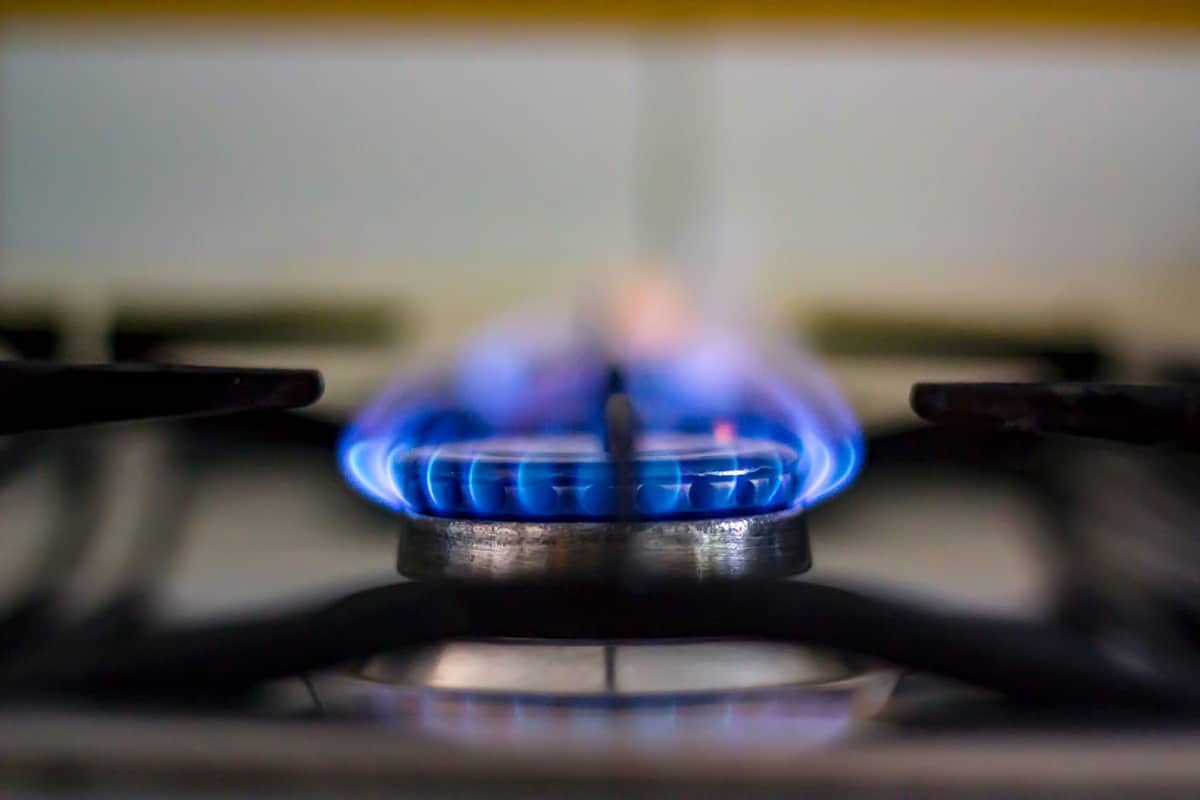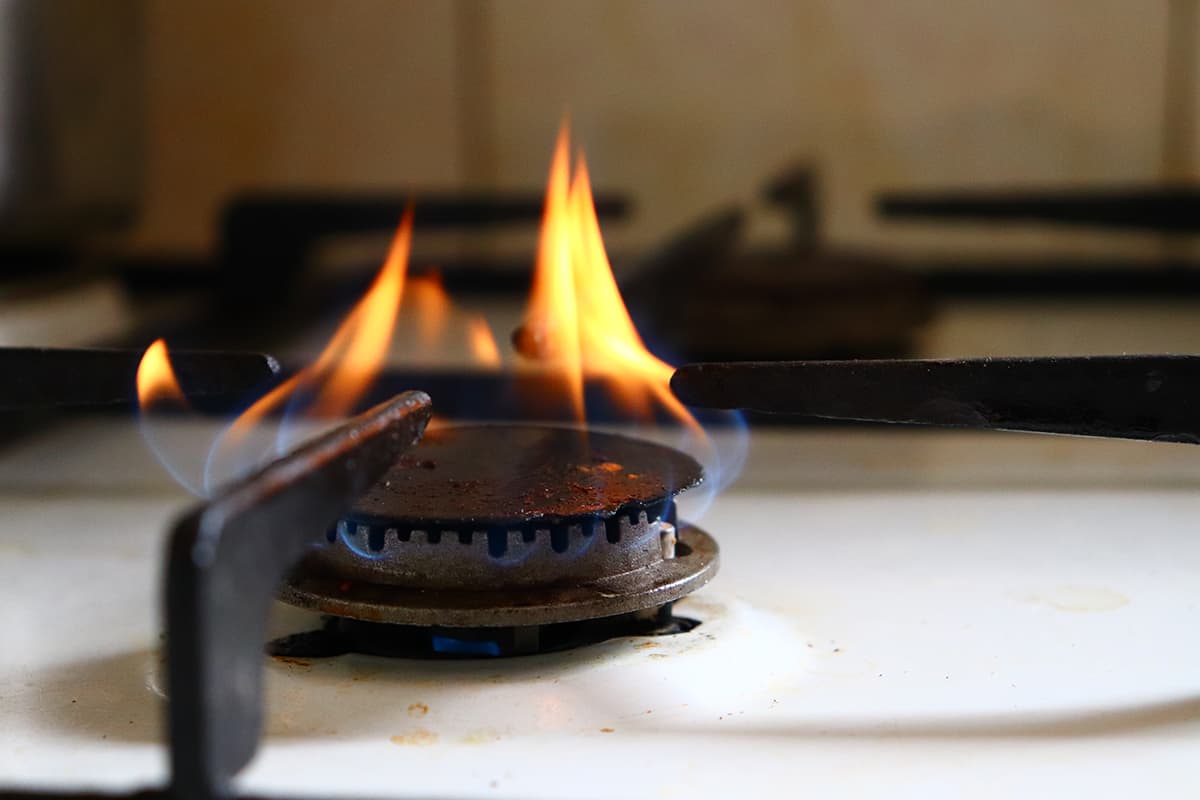An orange flame on your gas stove can be a concerning sight, especially if you’re used to seeing a blue flame. It can indicate that something is not quite right with your gas stove and may need attention. However, before you start to panic, it’s important to understand that there are several possible reasons for an orange flame.
If your gas stove produces orange flames, you should keep an eye out for the following causes:
- Inadequate air supply
- Dirty burners
- Low-quality gas
- Gas pressure issues
- Burner misalignment
In this blog post, we will explore the different reasons for an orange flame on a gas stove and the solutions to fix it.
Understanding Flame Color
The color of a flame can tell you a lot about what’s happening with your gas stove. A blue flame is the desired outcome because it indicates that your gas stove is burning fuel efficiently. Blue flames are also hotter than orange flames, making them more effective for cooking.
An orange flame, on the other hand, can be a sign of a problem with your gas stove. It can indicate that there is not enough oxygen in the combustion process or that there is a blockage in the burner. An orange flame can also release carbon monoxide gas, which can be dangerous to your health.
Understanding flame color is important for maintaining the safety and efficiency of your gas stove. If you notice an orange flame on your gas stove, it’s important to investigate the cause and find a solution.
Common Causes of an Orange Flame

Here, we’ll dive deeper into the causes mentioned earlier.
1. Inadequate air supply
A proper air-to-gas mixture is essential for achieving a clean, blue flame. When there is insufficient air supply, the gas cannot burn completely, leading to the production of carbon soot and an orange flame.
How to identify inadequate air supply
Observe the flame and listen to the burner. If the flame is mostly orange with soot deposits around the burner and you hear a hissing or sputtering sound, the air supply may be insufficient.
How to fix inadequate air supply
Ensure that the air shutter, which controls the air-to-gas mixture, is clean and properly adjusted. Additionally, verify that there are no obstructions in the burner ports or air intake vents.
2. Dirty burners
Over time, food particles, grease, and other debris can accumulate on the burners, disrupting the flow of gas and preventing complete combustion. This incomplete combustion leads to an orange flame with a higher production of carbon soot.
How to identify dirty burners
Check for visible debris, discoloration, or uneven flame patterns.
How to fix dirty burners
Turn off the stove and allow it to cool completely. Remove the burners and soak them in warm, soapy water. Use a soft brush or cloth to remove any debris and rinse the burners thoroughly before reinstalling them.
3. Low-quality gas
Impurities in the gas can interfere with the combustion process, leading to a higher production of carbon soot and a less efficient burn. This results in an orange flame instead of the desired blue flame.
How to identify low-quality gas
Pay attention to the flame’s color and overall stove performance. If you notice an orange flame even after cleaning the burners and adjusting the air supply, low-quality gas may be the culprit.
How to fix low-quality gas
Consider changing your gas supplier or using a gas additive designed to improve combustion efficiency.
4. Gas pressure issues
Proper gas pressure is essential for efficient combustion and a clean, blue flame. Insufficient gas pressure can lead to incomplete combustion and an orange flame, while excessive gas pressure can cause a dangerously large flame.
How to identify gas pressure issues
Look for an orange flame that is either too small or too large, as well as fluctuations in flame size.
How to fix gas pressure issues
Verify that your gas supply is turned on and functioning correctly. If the problem persists, consult a professional technician to check the gas pressure regulator and make any necessary adjustments.
5. Burner misalignment
When burners are not properly aligned, the flow of gas and air can be disrupted, leading to incomplete combustion and an orange flame.
How to identify burner misalignment
Check if the burner caps are seated correctly and the burner heads are aligned with the gas ports. Uneven flames and excessive noise during operation can also indicate burner misalignment.
How to fix burner misalignment
Ensure that the burner caps are properly placed and the burner heads are aligned with the gas ports. If the issue persists, consult a professional technician to inspect and adjust the burners as needed.
Additional Factors Affecting Flame Color
Some additional factors can affect the flame color. These factors may not directly cause an orange flame but can contribute to the issue or make it more noticeable.
1. Humidity
High humidity levels in the air can affect the combustion process and lead to a less efficient burn. This can result in a flame that appears more orange than blue. To address this issue, ensure that your kitchen is well-ventilated and consider using a dehumidifier if you live in a particularly humid climate.
2. Altitude
The altitude at which you live can impact the performance of your gas stove. As altitude increases, the air pressure decreases, which can affect the air-to-gas mixture and lead to an orange flame. Gas stoves can be calibrated at different altitudes, so consult your stove’s manufacturer for guidance on proper calibration if you live at a high altitude.
3. Ambient temperature
The temperature in your kitchen can also affect the color of your gas stove flame. Extremely cold temperatures can cause the gas pressure to drop, leading to an orange flame.
Similarly, extremely hot temperatures can cause the air-to-gas mixture to become unbalanced, resulting in an orange flame. Ensure that your kitchen is maintained at a comfortable temperature to promote optimal stove performance.
Preventing Orange Flames on a Gas Stove

Regular preventative measures don’t just enhance the efficiency and safety of your gas stove, but it also extends its lifespan. Here are a few things you should do:
1. Regular stove maintenance
Schedule routine maintenance checks every 3-6 months to ensure the stove functions correctly. This includes inspecting the burners, air supply, and gas pressure and promptly addressing any identified issues.
2. Proper burner cleaning
Keep the burners clean by regularly removing any debris, food particles, or grease. Soak the burners in warm, soapy water and use a soft brush or cloth to scrub them gently. Thoroughly rinse and dry the burners before reinstalling them to avoid corrosion or rust.
3. Monitoring gas quality and pressure
Ensure that you are using high-quality gas from a reputable supplier to minimize impurities that can affect the combustion process. Also, be mindful of any changes in gas pressure, as this can lead to an orange flame or other performance issues. If you notice fluctuations in gas pressure, consult a professional technician for assistance.
4. Ensure proper air supply
Regularly check the air supply to your stove by inspecting the air shutter and air intake vents. Keep these components clean and free of obstructions to maintain a proper air-to-gas mixture and ensure efficient combustion.
FAQs
1. Is an orange flame on a gas stove dangerous?
An orange flame on a gas stove can be dangerous as it indicates incomplete combustion, which leads to higher carbon monoxide production. Prolonged exposure to CO can cause serious health issues. Moreover, an orange flame is less efficient and can cause soot buildup, posing a potential fire hazard.
2. How do I clean my gas stove burners to restore a blue flame?
To clean gas stove burners and restore a blue flame, turn off the stove, let it cool, then remove the burners. Soak them in warm, soapy water and gently scrub them with a soft brush or cloth to remove debris. Rinse thoroughly and reinstall the burners after they have dried completely.
3. How do I know if my gas stove has a proper air supply?
To check if your gas stove has a proper air supply, observe the flame color and listen for unusual noises. A predominantly blue flame and a quiet burner indicate a proper air supply. If the flame is orange and you hear hissing or sputtering, the air supply might be insufficient, and adjustments may be needed.
4. Is it normal for the flame to be orange when I first light my gas stove?
It is normal for the flame to be slightly orange when you first light your gas stove as the initial combustion may produce a small amount of soot. However, the flame should quickly turn blue as the soot dissipates. If the orange flame persists, an issue may need addressing.
5. How often should I perform maintenance on my gas stove to prevent an orange flame?
Perform maintenance on your gas stove every 3-6 months to prevent an orange flame. Regular maintenance includes cleaning the burners, checking the air supply, and inspecting the gas pressure. This helps ensure optimal performance, efficiency, and safety while using your gas stove.






